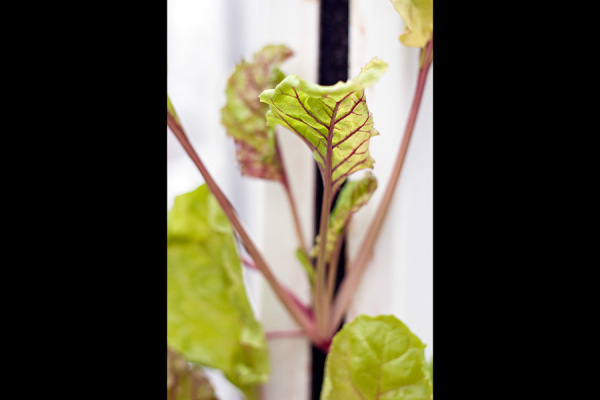It’s been a nice fall in the Flathead, with plenty of warm days to view the changing leaves and a solid harvest of autumn vegetables to put on the tables. But as winter approaches, finding fresh vegetables grown in the valley becomes a nearly impossible task.
Mark Winchel and Lee Anne Christensen noticed that when the weather changed, they had to give up on their outdoor garden at their home on Highway 40, between Whitefish and Columbia Falls, and buy veggies that had been trucked into the valley from elsewhere in the country or even other countries.
“A head of cabbage is shipped 1,200 to 1,500 miles to get here,” Winchel said while standing in his greenhouse last week.
Northwest Montana’s climate doesn’t jive with year-round outdoor vegetable production, but Winchel and Christensen hope to create an indoor alternative that would provide fresh, organic vegetables for shoppers, restaurants, and homes.
Aquaponics is a system that combines the traditional aquaculture of raising fish and the hydroponic practice of growing plants. In their greenhouse, Winchel and Christensen have developed in the past few years a closed-loop system wherein the water fertilized by a tank of fish – usually perch or blue gills – is sent through vertical towers holding leafy greens and herbs.
Worms in the towers cleanse the post-fish water of its large impurities, providing extra goodies for the plants, and the plants in turn cleanse the water for the fish. This cycle provides healthy fish and rapidly growing plants.
“The water usage is minimal,” Winchel said. “We probably use about 90 percent less water than on our dirt garden.”

The whole system is heated through a wood-burning stove, and to keep everything warm enough through the winter, they’ll probably burn through a few cords of wood, he said.
Last week, the vertical towers, which sit in rows five towers deep, were sprouting beautiful lettuce, basil, chard, oregano and more. The Thai basil was big enough to harvest, and had only spent nine days on the tower after being placed there as a sprouted seedling.
A plant can go from seed to harvest-ready in about two weeks, Winchel said, so if each tower is at full bore, it can produce about 10 big harvests per year.
Winchel and Christensen would like to expand their current system into a commercial enterprise, called Aquaponics North. The goal is to have a big enough greenhouse to be able to supply organic food stores with towers, where customers can clip off the amount of salad or herbs they need without having to deal with packaging.
Eventually, they would like to be able to provide the towers to restaurants as well.
“(Restaurants’) biggest expense and disappointment is the greens in the winter here,” Winchel said.
People could also put the towers in their homes, and either plant and harvest themselves or have the Aquaponics North team stop by with full towers.
Winchel said the business would have room to expand on his five-acre property, where they could build greenhouses and run up to 150 towers to start off. Eventually, they could work up to 600 towers.
“It’s an achievable goal,” he said.
The couple has set up an Indiegogo campaign for Aquaponics North, which is a website for crowdsourced funds for projects. They are trying to raise $50,000 to cover the remaining 25 percent of the infrastructure needed to get the project going.
Winchel is a landscape contractor by trade, and has 22 years in that industry. He built the greenhouse on his property as a hobby, and when the economy took a nosedive in 2009 as the recession hit, he took a look at the idea of commercializing the space.
The couple started with horizontal stacks of plant beds, but eventually realized that vertical growing stands allow for more plants in the same amount of space. And the less water used in Montana’s arid climate the better, he said.
By bringing vertical aquaponics to people’s lives, Winchel and Christensen hope to create a sustainable, organic way to ensure fresh vegetables don’t have to travel more than 20 miles to Flathead Valley tables.
“The goal is to get this into the market,” Winchel said.
For more information on Aquaponics North, visit www.indiegogo.com/projects/aquaponics-the-herb-and-salad-filling-stations or the company’s Facebook page.
